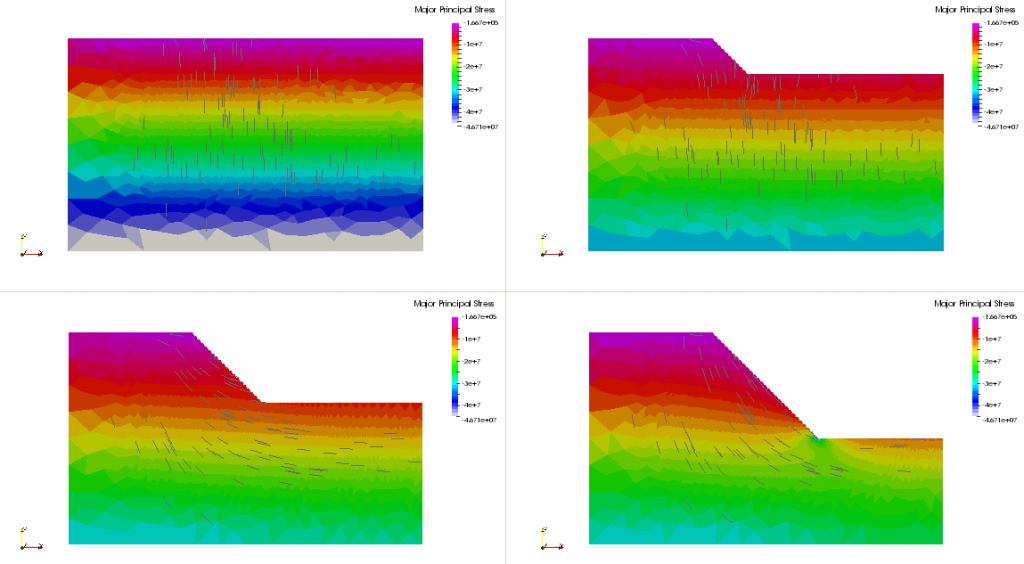The computational engine of Irazu simulation software is based on the finite-discrete element method. This inherently means that Irazu is equipped with a finite element solver (FEM). The FEM solver uses linear elastic constitutive laws (isotropic and transversely isotropic) and solves the equations of motion using an explicit time integration scheme. Therefore, it is well suited to model dynamic problems. In addition to being a simulation tool on its own, the FEM solver can be used together with the FDEM solvers of Irazu: an Irazu simulation can be started from a prescribed FEM state. This can greatly reduce the computational demands of Irazu simulations and thus save simulation time.
Some examples of the application of the FEM solver include:
- Elastic stress-strain analysis of many practical engineering applications
- Application of geostatic in-situ stresses to the domain
- Modelling stress variations caused by mining operations, including staged excavations
- Simulation of dynamic problems, including stress wave propagation in heterogeneous media
Below is an example of an open pit mine. Firstly, the far-field in-situ stresses are applied to the pre-mining domain based on available stress data. Afterwards the excavation of the pit is considered in 3 stages. Notice the changes in stress distribution and principal stress rotations (gray lines). These results can be used on their own or as a starting point for a full FDEM analysis with Irazu in which large deformations and possible fracturing in the slope can be simulated.
This feature is currently available in the latest versions of both Irazu 2D and Irazu 3D. We also plan to release a standalone FEM version of Irazu in the future. Please get in touch with us by expressing your interest to info@geomechanica.com ![]() .
.
Picture above: Staged excavation of an open pit slope. The simulation started by applying far-field in-situ stresses (top left), then three stages of excavations. The gray lines indicate the direction of major principal stress, σ1. Compressive stresses are negative. Stress unit: Pascals.
